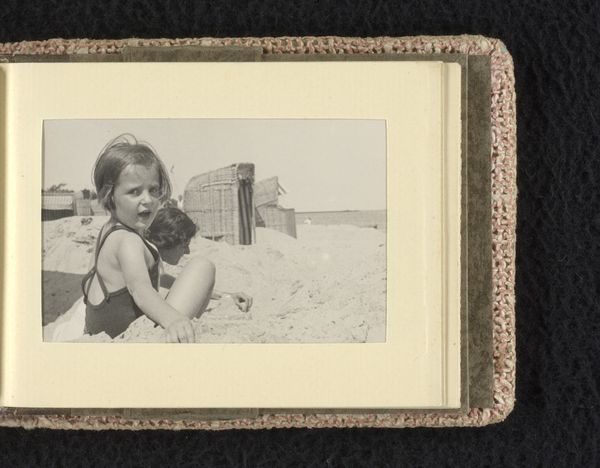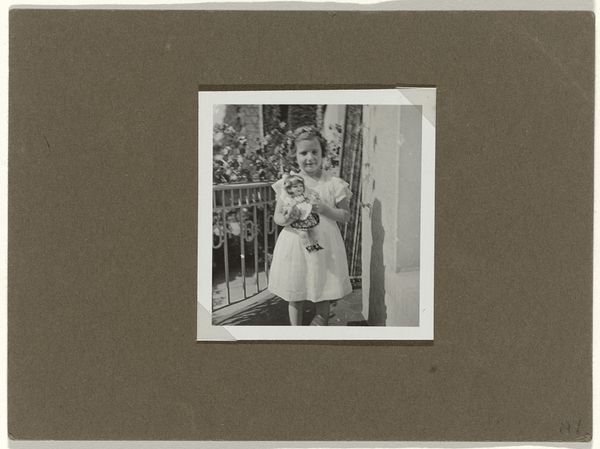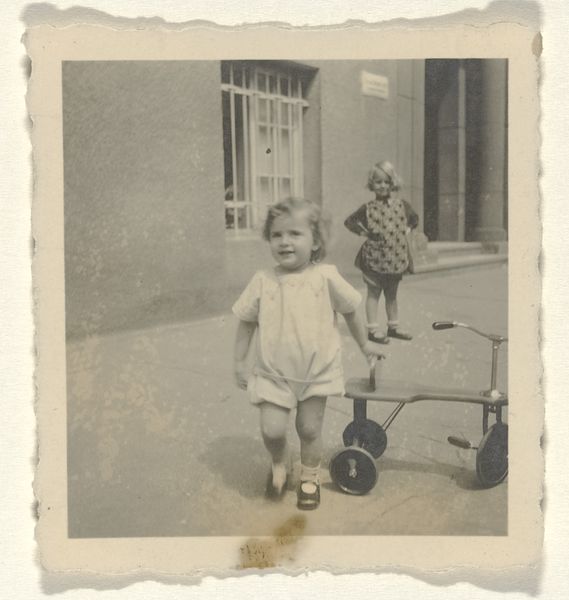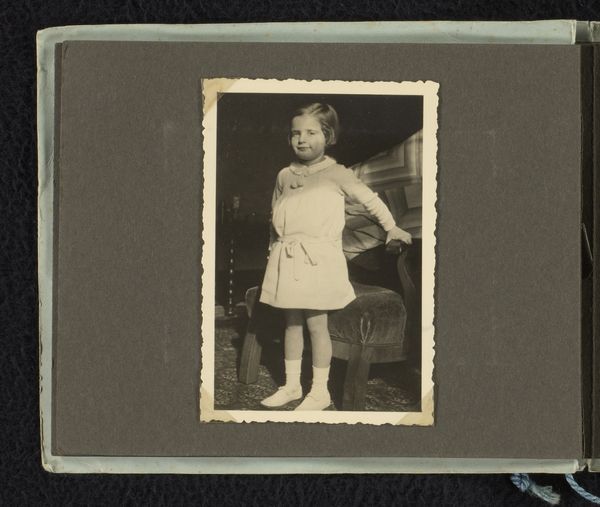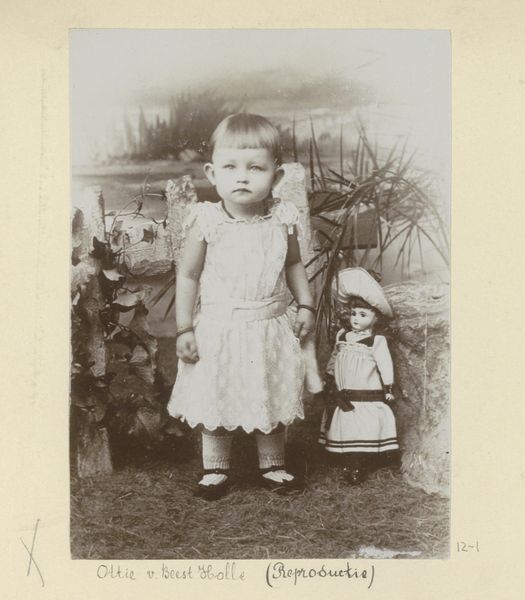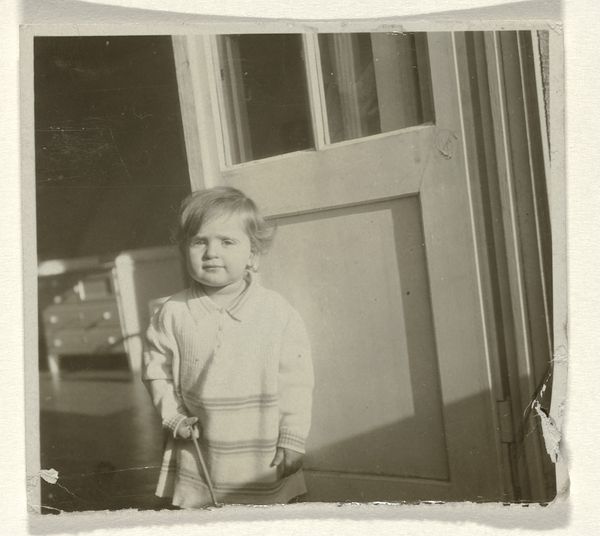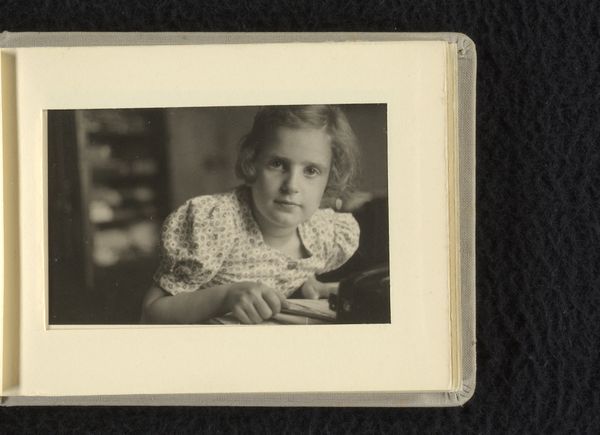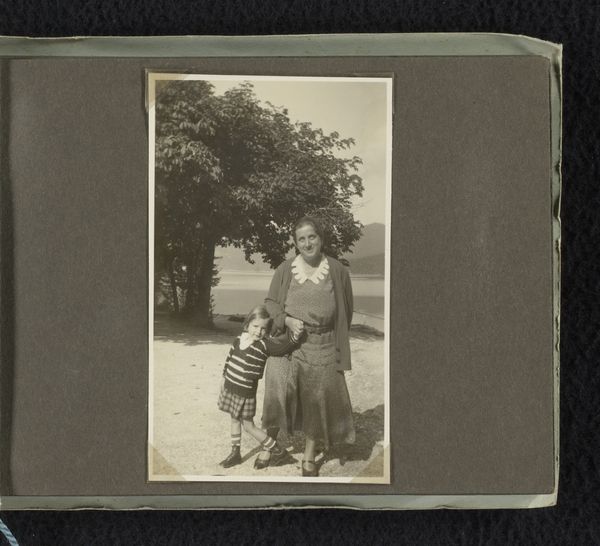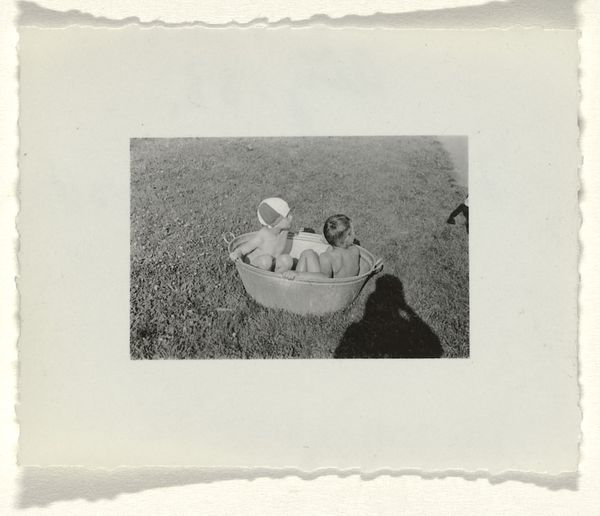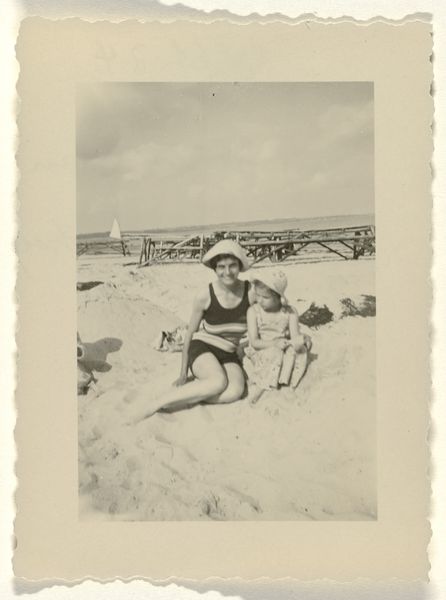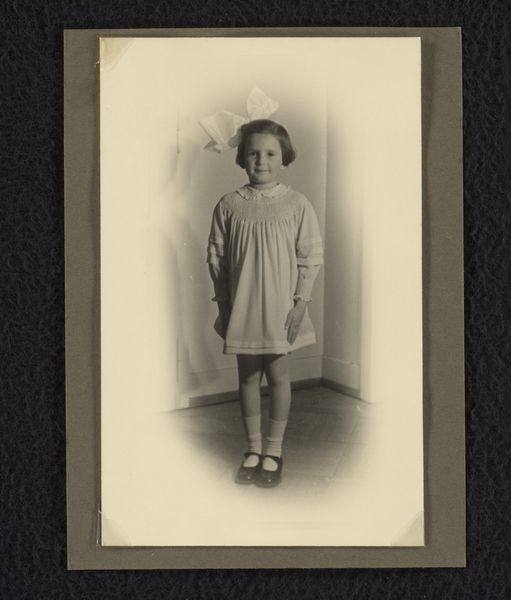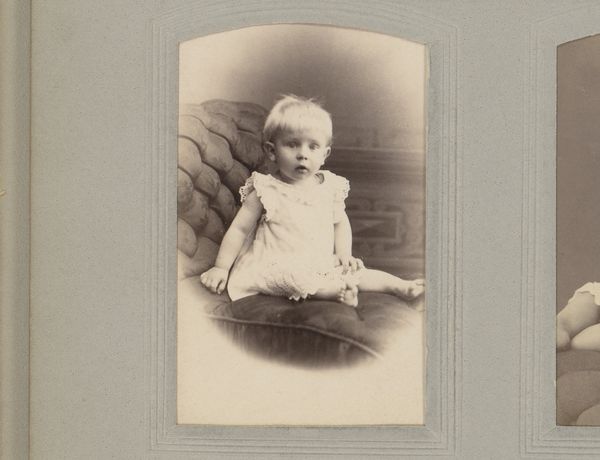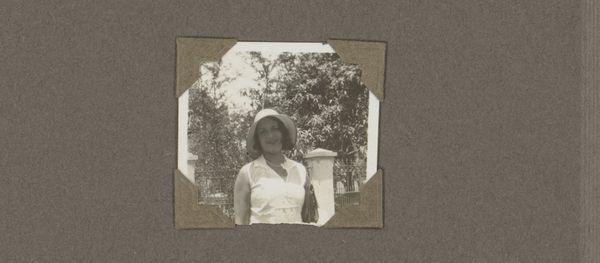
photography, gelatin-silver-print
#
portrait
#
street-photography
#
photography
#
gelatin-silver-print
#
genre-painting
#
realism
Dimensions: height 45 mm, width 60 mm
Copyright: Rijks Museum: Open Domain
Curator: Here we have a photograph titled "Isabel Wachenheimer op strand van Travemünde, augustus 1933", or "Isabel Wachenheimer on the beach of Travemünde, August 1933", estimated to have been taken between 1933 and 1938. It's a gelatin silver print. What's your initial impression? Editor: Sun-drenched and slightly unsettling. There’s a stark innocence to this little girl juxtaposed against...well, against everything, given the date. It’s the kind of photograph that whispers louder than it shouts. Curator: Indeed. These kinds of vernacular images gain so much weight, especially knowing the escalating persecution of Jewish people happening during the years this photograph was created. We can assume the subject is of Jewish descent given her name. What feels like an innocent snapshot of a child enjoying the beach becomes laden with historical significance and melancholy. Editor: Melancholy is the perfect word. I see her eyes—wide, almost questioning—and I can’t help but wonder what her future held. There's a poignant immediacy, too; photography has that power to freeze a specific moment in time. It’s impossible to escape the shadow that history casts. Curator: Right. And what also interests me is that the photograph offers an everyday scene that is not overtly political. It speaks to the lives of people outside the theater of politics, the mundane reality of which was brutally affected by politics. This highlights how everyday experiences are shaped by larger power dynamics, making visible something that might otherwise be ignored. Editor: Precisely! The details become imbued with meaning. Like those beach huts in the background; a symbol of leisure turned somehow ominous. Did she know that this photograph might, someday, become a precious record? Maybe even a defiant assertion of a life lived? It really speaks to the complicated way that joy and sorrow are braided together in the human experience, particularly during dark times. Curator: I agree entirely. By viewing images such as this, the contrast between the personal and the historical becomes clear, asking viewers to see the broader context that changed people's life. Editor: It’s like holding history in your hand—fragile, yet enduring. You start to wonder about who took this picture. The sun’s a killer with a camera. Thanks for making this experience profound, let's move along to another masterpiece.
Comments
No comments
Be the first to comment and join the conversation on the ultimate creative platform.
